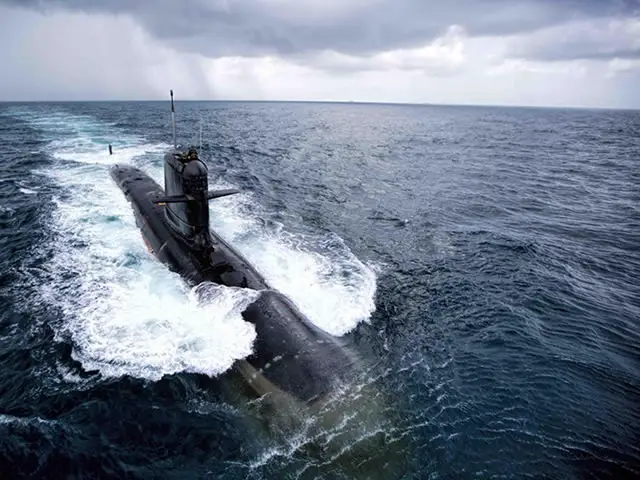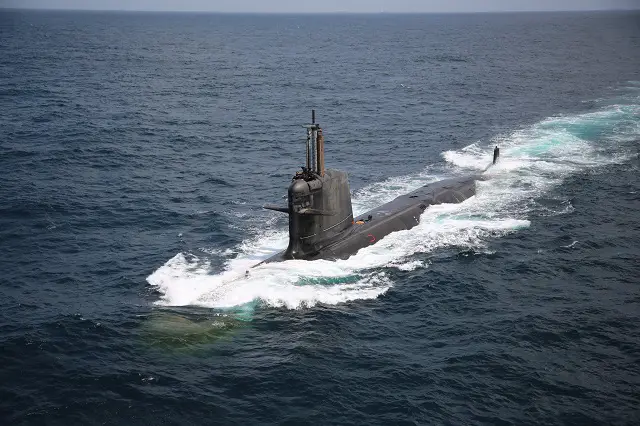Breaking news
Indian Navy Scorpene-class Submarines in Sea Trials & SUT Torpedo Firing Test.
| 2017
|
|
|||
 Kalvari conducted its first torpedo firing on 26 May 2017. Indian Navy picture. Kalvari conducted its first torpedo firing on 26 May 2017. Indian Navy picture. |
|||
|
As part of the ongoing sea trials, the first indigenously built, Scorpene-class submarine Kalvari undertook it's first torpedo firing on 26 May 2017. A German SUT heavyweight torpedo was used for the test.
SUT Torpedo The SUT heavyweight wire-guided torpedo is a dual-purpose weapon that can be launched off surface ships and submarines, and from shore positions. Its successor is the DM2A3/4 (Seehecht) by Atlas Elektronik. The SUT torpedo is designed to operate effectively in both deep and shallow water and against surface and underwater targets. The Mod 1 variant is a developed version of the SUT Mod 0 with modifications to meet specific user requirements. It was delivered to India and Chile. The SUT is reported to have a range of 15.1 nautical miles at 18 knots or 8 nautical miles at 35 knots. The SUT is already fitted aboard the Type 209 SSK (Shishumar-class submarine) of the Indian Navy. Kalvari class Submarines were originally planned to be fitted with the Black shark heavyweight torpedo by Italian company WASS / Leonardo but this plan was stopped follwoing a bribery scandal. Down the road, the Kalvari class may receive the Varunastra, a new heavyweight torpedo currently being developped in India by the DRDO. In March this year, Kalvari conducted its first SM39 Exocet anti-ship missile launch. P75 Scorpene Six submarines of the P75 project are being built by MDL through technology transfers from DCNS for the Indian Navy. "Kalvari", the first Scorpene class diesel-electric submarine (SSK) was launched in the water on 28th October 2015 in Mumbai. It started sea trials in May last year. The sea trials campaign went well and left Indian submariners with a very good impression. "Khanderi", the second submarine in the series, was launched in January 2017 and started sea trials in June. Four other submarines will follow in the wake of Khanderi, at intervals of nine months. |
|||



























